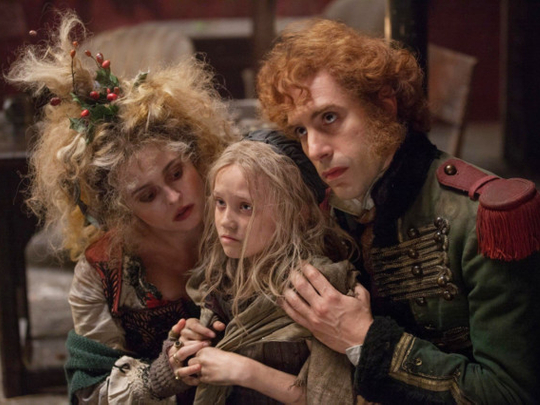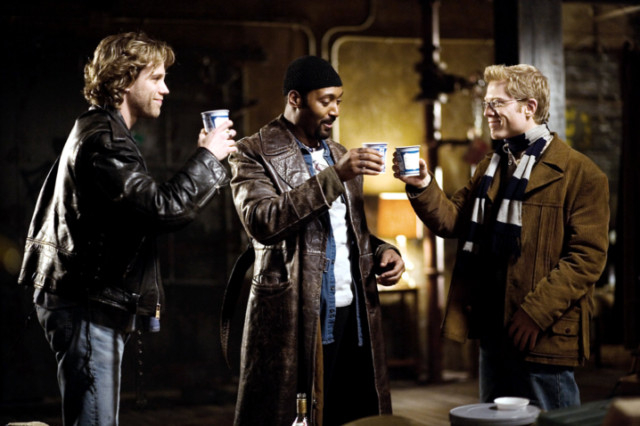
Recently, pop singer Adam Lambert unleashed a series of tweets critiquing the vocal performances in the film adaptation of ‘Les Miserables.’
“Visually impressive with great emotional performances,” he said. “But the score suffered massively with great actors PRETENDING to be singers.”
Russell Crowe, who plays brooding antagonist Inspector Javert — and who has received his fair share of vocal critique — responded with equanimity, tweeting that while he understood the singer’s view, director Tom Hooper wanted the live singing to be ‘raw and real.’ It’s true that the movie’s singing is more ‘raw’ than it might have been with more polished, professional singers in the cast. But the idea that such singing is more ‘real’ reflects a stigma that seems out of place when discussing a genre as full of artifice as the movie musical.
Lambert argued on Twitter that Hooper should have cast better singers, but there’s another method that has worked brilliantly in the past and should not be frowned upon: Movie musicals should go back to letting its stars act, while dubbing the songs with trained vocalists. In a show as technically difficult as ‘Les Miserables’ — in which nearly every single line is sung, not spoken — interpreting the music is as essential to telling the story as being able to act. In Hooper’s version, there’s a wide range of artistic strengths on display — Crowe, Amanda Seyfried, and even the widely touted Hugh Jackman, while visually arresting, leave much to be desired vocally.
Samantha Barks, who plays Eponine and has mostly a musical theatre background, sings beautifully — but does not convey emotion on screen the way those others do. Only Anne Hathaway and Eddie Redmayne manage both talents with aplomb. I don’t fault Hooper for choosing stars with screen presence over those who can handle the musical material. It makes sense commercially as well as, to some degree, artistically, and it has traditionally been the approach for those making Hollywood musicals.
In the last 30 years or so — roughly during the ‘rockist’ era of music criticism — dubbing has been disregarded as inauthentic. During this mostly fallow period for Hollywood musicals, a handful of films, from ‘Everyone Says I Love You’ to ‘Mamma Mia!,’ have tried reviving the form with non-singers.
And in rare cases, as with ‘Rent,’ an adaptation has maintained most, if not all, of its original stage performers to stay true to the show, even if their screen-acting skills were unproven. But whatever is gained in ‘authenticity’ in either case is usually lost in sheer aesthetic quality. The history of the movie musical shows that such ‘realism’ is unnecessary. Classically trained singers like Betty Noyes, Betty Wand, and Marni Nixon made careers out of singing for some of Hollywood’s most famous actresses, including Audrey Hepburn and Leslie Caron. One of the greatest movie musicals, ‘West Side Story,’ dubbed three of its leads — Natalie Wood, Richard Beymer and Rita Moreno — because their voices weren’t trained for the operatic score. The film was better for it. Hooper’s vision of ‘raw and real’ performances makes intuitive sense, but it flies in the face of filmmaking craft. You’re always depending on artifice, and ‘fake’ methods can produce real emotions in filmgoers. In the case of ‘Les Miserables,’ a little more fakery would likely have made me feel quite a bit more.














